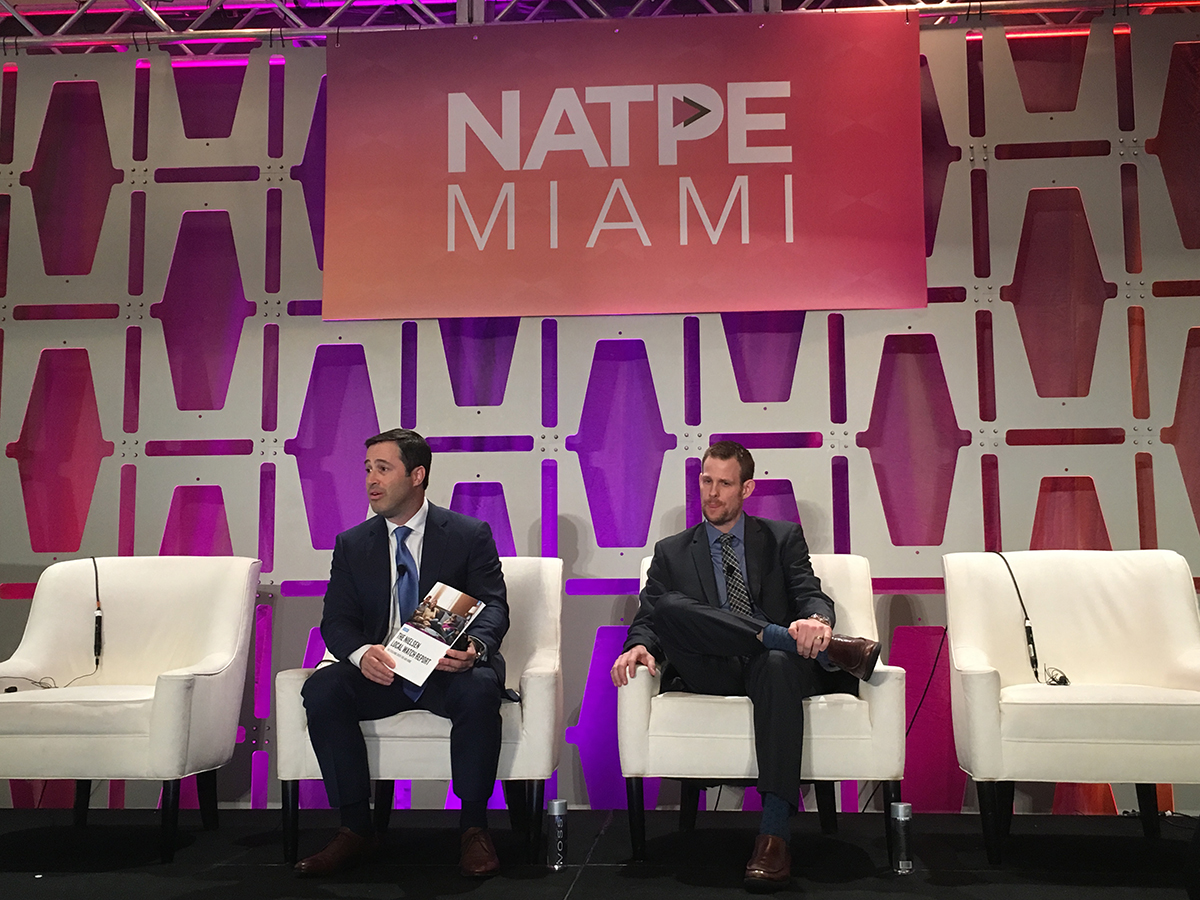
As consumers seek more compelling content in cost-effective ways, employing the use of over-the-air (OTA) antennas for broadcast TV is growing rapidly. For broadcasters and advertisers, understanding who’s in OTA homes and how they engage with media is critical to understanding the current viewing landscape.
Nielsen sponsored and presented findings about today’s OTA homes at this year’s National Association of Television Program Executives (NATPE) conference in Miami Beach, Fla. To set the stage, Jeff Wender, Managing Director, Nielsen Local delivered a deep dive into these trends with Justin LaPorte, VP of Local Audience Insights at Nielsen on the topic of “Over-the-Top and Over-the-Air, Monetization and Redefining the Media Landscape,” to a packed house of media executives and industry influencers.
Justin presented insights from the recently released Local Watch Report, unpacking the impact of over-the-top (OTT) viewing, the increase of OTA TV consumption and the number of choices that are influencing media viewing behavior. He addressed how these trends are redefining the media landscape, and emphasized the importance of accurate measurement methodology when it comes to full coverage and representation of viewers, as Nielsen is the only measurement company that directly measures this fast-growing segment of OTA homes, which now account for 14% of TV homes in the U.S.
“More choices for quick and easy access to on-demand video content, including both TV-connected and personal devices, have changed what people have available in their homes and how they consume media,” said Justin.
“With today’s streamers transcending a broad spectrum of geography, generations and household types, there is a unique opportunity to reach audiences in new ways, with further monetization possibilities,” he continued. “Over-the-air homes, which include cord shavers and cutters, are increasingly adopting OTT options, and there is an abundance of new ways to reach this growing demographic.”

In terms of insights on cord cutting and the evolving OTA home from the latest Local Watch report, Justin offered a few key takeaways: TV streaming (OTT consumption) in the U.S. almost doubled between 2016 and 2018, and we see consumers viewing more linear content on the TV screen through apps via streaming devices (internet-enabled video game consoles and smart TVs). More homes are cord shaving and cord cutting to save money, and the savvy consumers in these homes tend to be younger, likely to be married with kids, are more affluent, and have OTT-capable devices in the home.
- Fifty-nine percent of these cord cutters are shifting to OTA, and 41% are shifting to broadband only.
- OTA homes have evolved quickly in the past few years into two groups: one has SVOD and one does not have SVOD.
- Consumers in OTA SVOD homes tend to be younger, more affluent families than consumers in OTA homes with no SVOD; they also watch less traditional TV and stream on the TV set more than OTA homes with no SVOD.
The panel concluded the discussion about how the media landscape is evolving at the national and local levels with Jeff and Justin discussing opportunities and challenges for advertisers and marketers as they navigate an increasingly evolving and disparate landscape.
During the conference, Jeff also provided insight that was included in an article in the NATPE Daily: “Stations are doing a great job delivering content where consumers are watching, through attractive skinny bundles mobile apps and user-friendly OTT devices. It’s all about being in the right place, and the groups are investing and offering compelling content that opens new monetization opportunities.”
